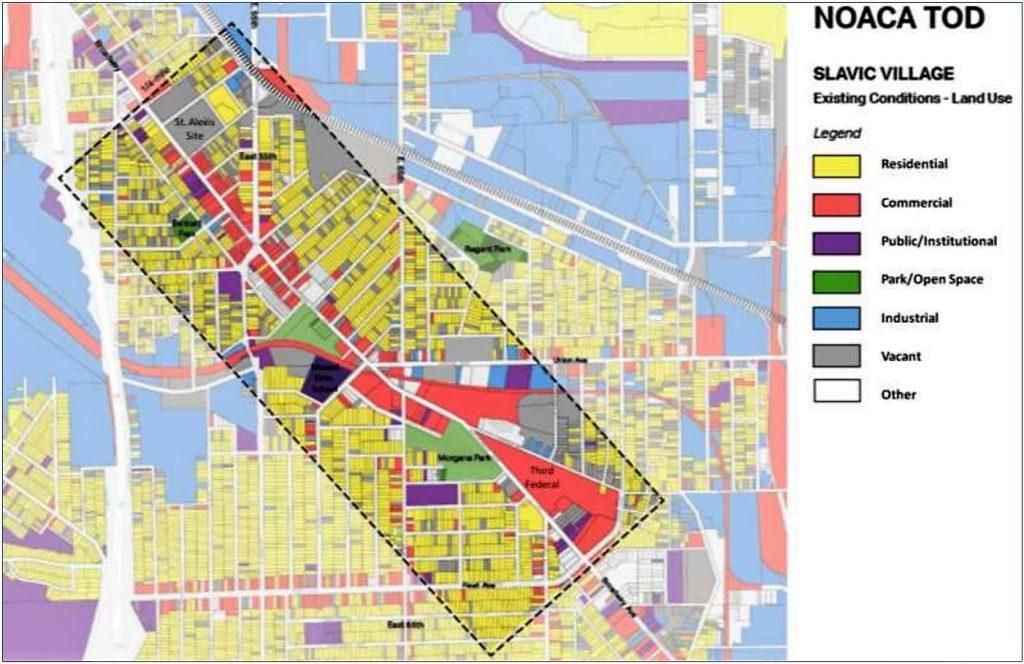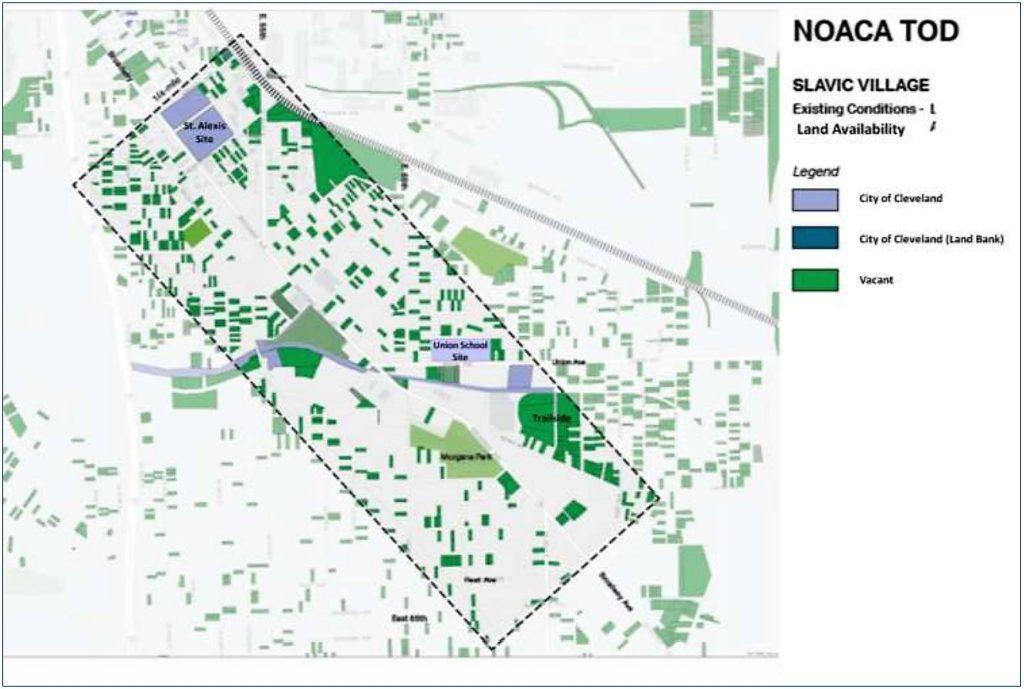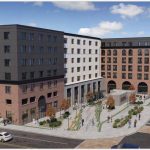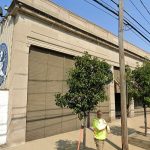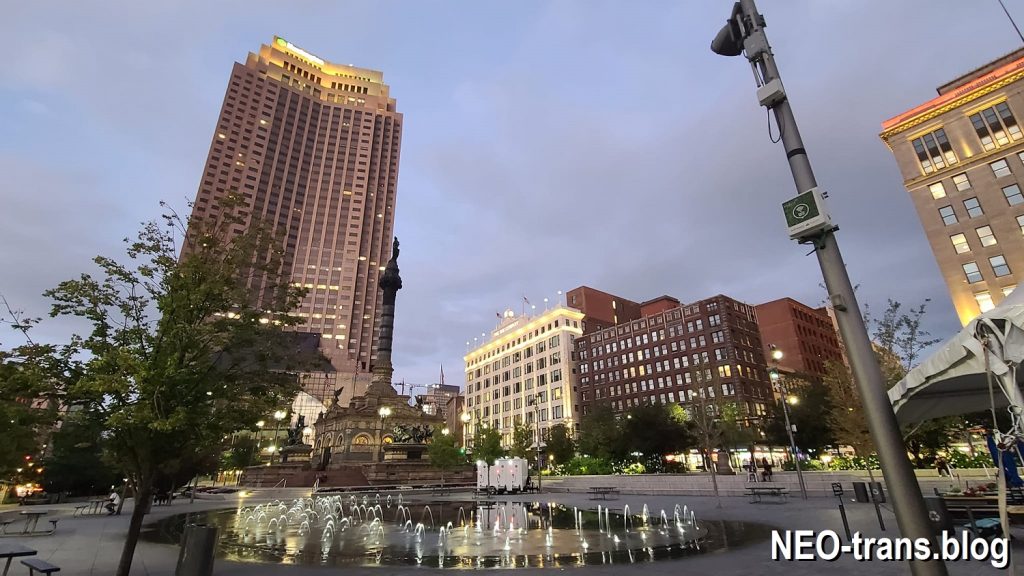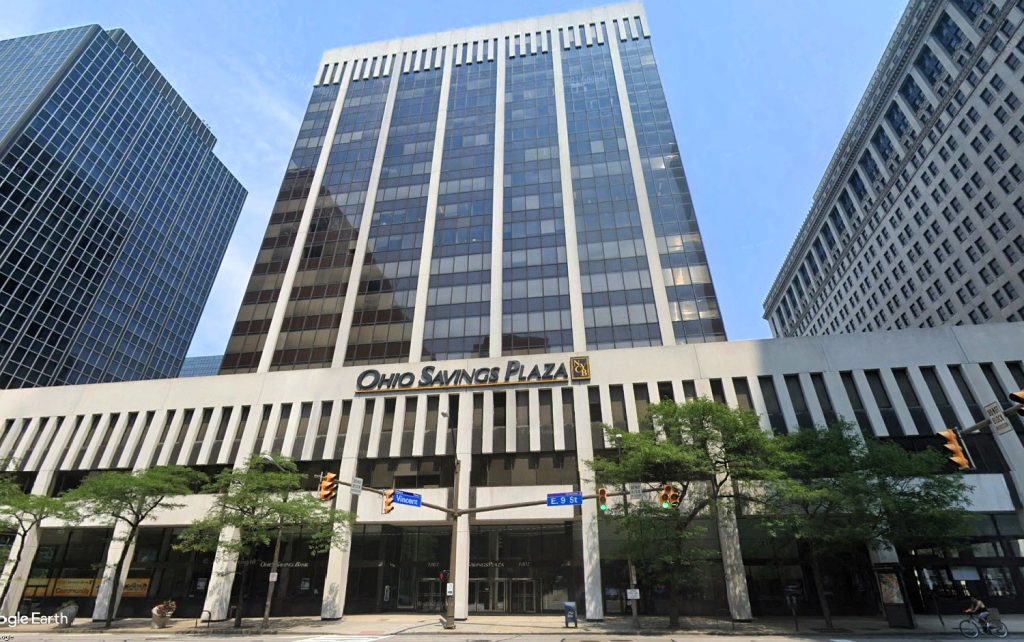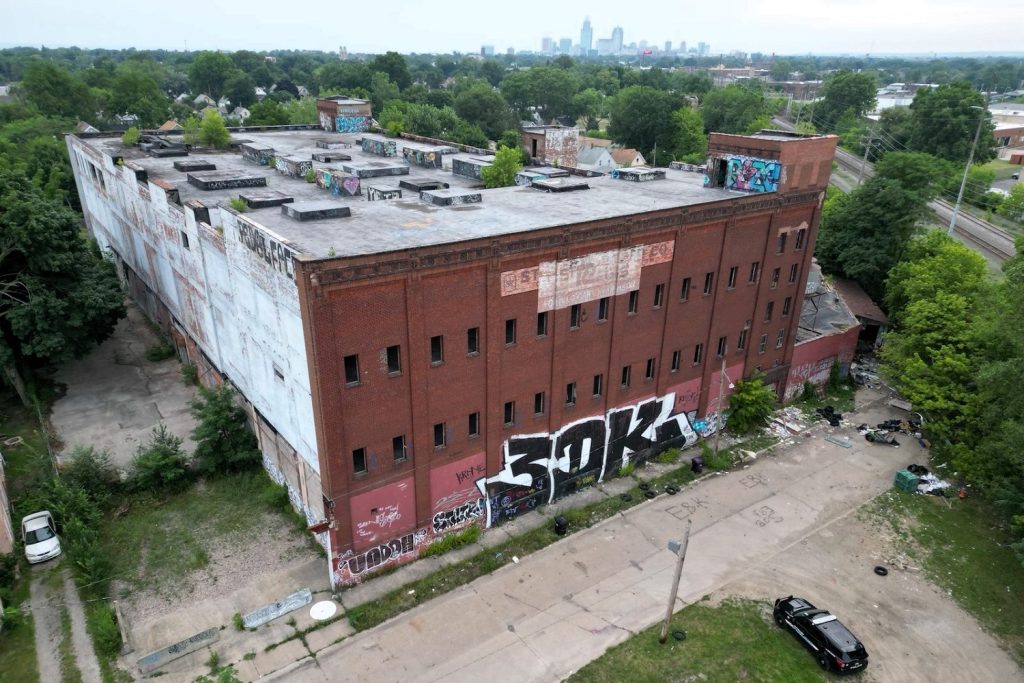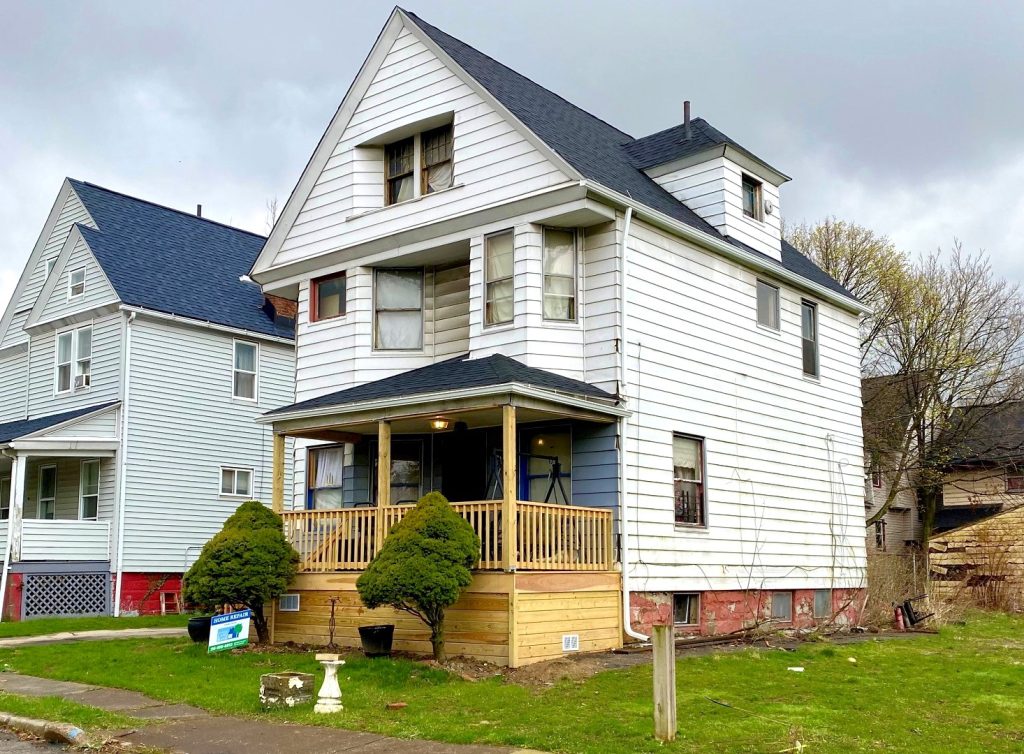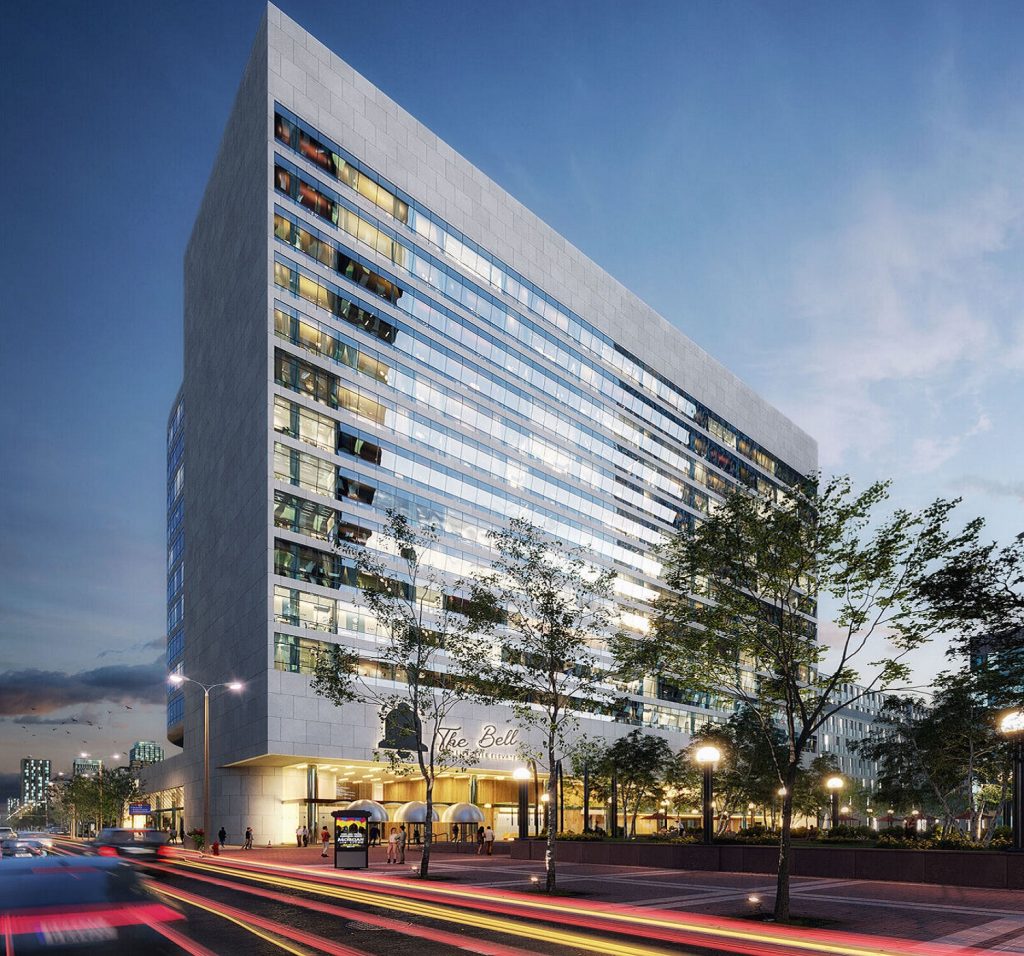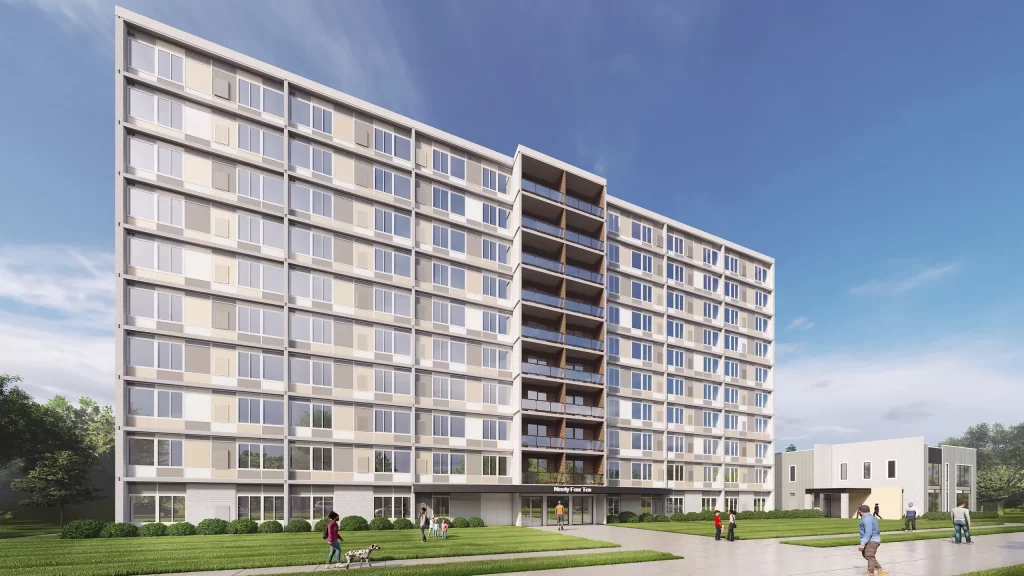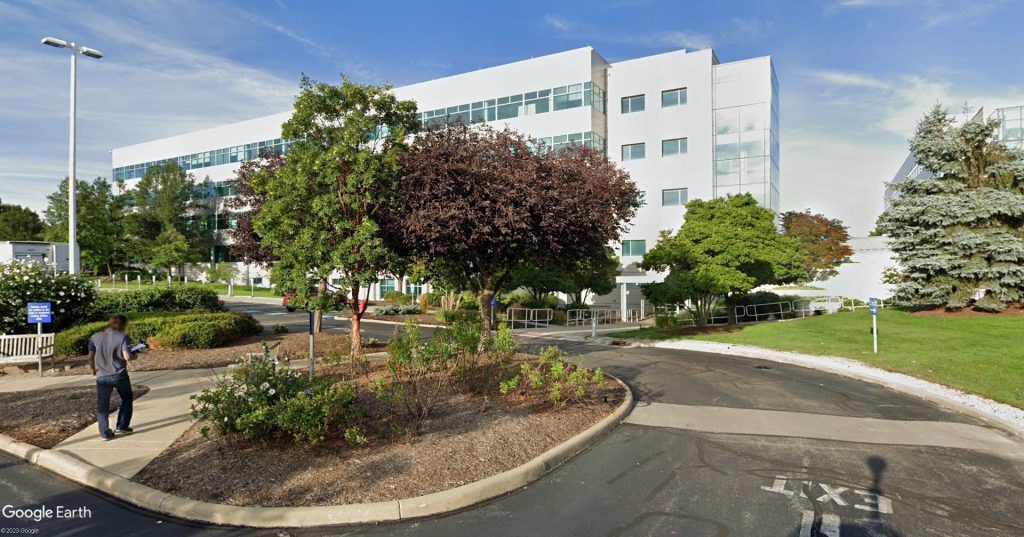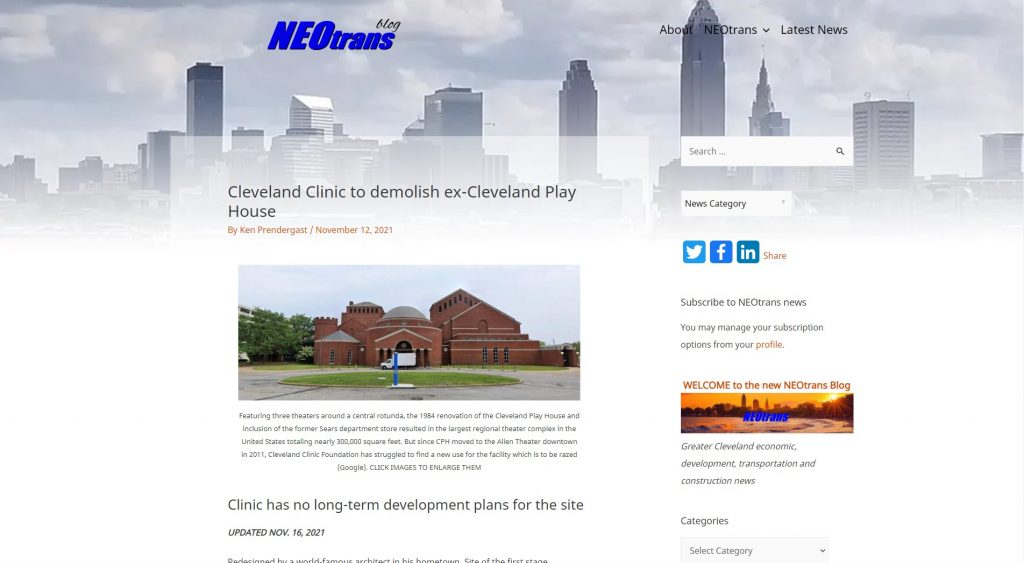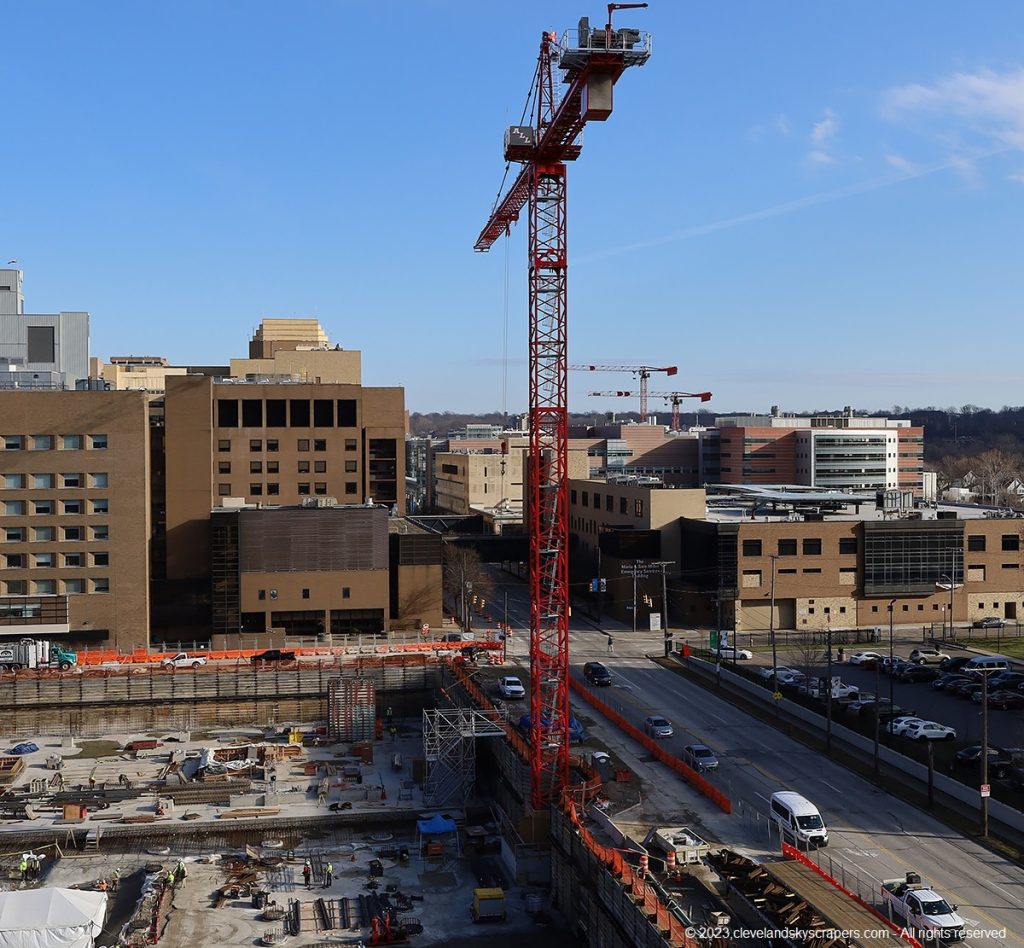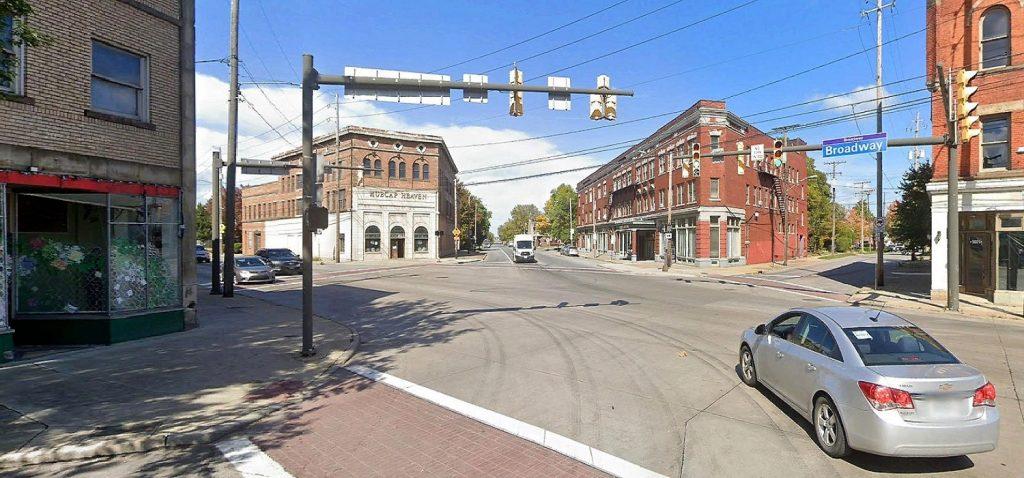
The five-way intersection of Broadway Avenue, East 55th Street and Hamlet Avenue is the traditional center of Slavic Village, once called Little Bohemia for its large Czech population. It retains all of its pre-World War I buildings even though many are in a decayed condition. Reviving this area as part of the Broadway transit corridor is the goal of new planning and development by the Greater Cleveland Regional Transit Authority and Slavic Village Development Inc. (Google). CLICK IMAGES TO ENLARGE THEM
GCRTA wins grant to plan corridor development
The beleaguered Broadway Avenue corridor in Cleveland’s Slavic Village could soon see new signs of life thanks to a federal grant that was awarded last week to the Greater Cleveland Regional Transit Authority (GCRTA). The $432,000 grant will allow the transit agency to develop plans to redesign the Broadway corridor from the Turney-Ella bus loop near Calvary Cemetery to downtown as a bus rapid transit (BRT) route with enhanced pedestrian and bicycle infrastructure. Once those plans are complete, it can then apply for federal funds to build that infrastructure.
The planning work will also help guide land use decisions involving zoning, parking policies and public incentives to support local transit-oriented development (TOD) — mixed-uses in dense, walkable settings served by frequent transit services — by GCRTA, the city of Cleveland and Slavic Village Development Inc., a nonprofit community development corporation. Indeed, it will support potentially significant redevelopment efforts that are already in the works.
“This will allow us to transform the entire neighborhood to take full advantage of our transit assets while renovating scores of underutilized commercial buildings,” said Chris Alvarado, executive director of Slavic Village Development. “I’m really glad that RTA reached out to us to put the application together, and we’ll be working hand-in-glove to make sure that our residents are fully engaged.”
On Nov. 17, the Federal Transit Administration announced the award of approximately $13.1 million from its Pilot Program for TOD to 19 projects in 14 states for 2022. The TOD planning grants support community efforts to improve access to public transportation. The grants help organizations plan for transportation projects that connect communities and improve access to transit and affordable housing.
“The Greater Cleveland Regional Transit Authority will receive funding to plan for TOD along the proposed Broadway Avenue Corridor project, a multi-modal planning project that will incorporate bus rapid transit with bike and pedestrian infrastructure,” said the FTA in awarding the grant. “The TOD plan will increase bicycle and pedestrian access to transit hubs, recommend ways to incorporate green infrastructure, and analyze ways to revitalize commercial and housing opportunities near transit stations.”
This is the second time GCRTA has been awarded funding from the FTA’s Pilot Program for TOD which has been in existence since 2015. In 2018, GCRTA won $336,000 to plan for TOD along the MetroHealth Line, a planned BRT line connecting downtown Cleveland with the city’s Old Brooklyn neighborhood via West 25th Street to serve MetroHealth’s expanded health facilities plus growing residential and employment areas. The only other Ohio recipient of these funds was the Western Reserve Transit Authority which received $250,000 to plan for TOD at up to nine stations in the Youngstown-Boardman Market Street BRT corridor.
Serving the entirety of the affected Broadway corridor is the 24-hour No. 19/A/B bus route which operates every 15 minutes throughout each weekday and every 30 minutes in the evenings. It runs half-hourly each weekend day and holiday and hourly overnight. Sharing the corridor northwest of Union Avenue to downtown is the No. 15 with a schedule pattern similar to the 19/A/B except it runs 20 hours a day, from 4 a.m. to midnight. Combined, they average a daytime bus every 7.5 minutes. Also, the hourly, daytime-only No. 2 and 16 buses serve parts of Broadway between East 55th and East 71st streets and access Steelyard Commons, current GCRTA schedules show.
FTA says the Pilot Program for TOD Planning helps supports its mission of improving communities through public transportation by providing funding to local communities to integrate land use and transportation planning with a new fixed-guideway or core-capacity transit capital investment. Comprehensive planning funded through the program must examine ways to improve economic development and ridership, foster multimodal connectivity and accessibility, improve transit access for pedestrian and bicycle traffic, engage the private sector, identify infrastructure needs, and enable mixed-use development near transit stations, according to the FTA.
In developing the grant application, Alvarado said his community development corporation included recommendations from a 2017 regional analysis by the Northeast Ohio Areawide Coordinating Agency (NOACA) to determine where TOD land use policies and incentives could be focused into pilot projects to help boost community investment and access to transit. That report estimated that the corridor had a market potential over the next five years to support 190 new residential units and 96,000 square feet of retail, restaurant and office space.
So NOACA and its consultant, global transportation consulting firm AECOM, suggested enhancing Broadway through Slavic Village to downtown Cleveland as a TOD corridor. It zeroed in on the site of the former St. Alexis Hospital (1884-2003) at Broadway and McBride avenues for TOD-themed development.
One of the results was the $22 million 5115 The Rising which opened last week. It’s a mixed-use development by NRP Group of Cleveland with 78 apartments and 10 townhomes, all affordable units, with a waitlist of more than 2,200 tenant inquiries. The University Settlement social services organization is relocating its offices to the building, occupying 20,000 square feet of commercial space on the ground level. Another 5,000 square feet of commercial space will serve as a food pantry and a Cuyahoga Community College Access Center offering job training, according to a written statement.
“The grand opening of 5115 at The Rising is a vital milestone in the process of revitalizing the Broadway-Slavic Village neighborhood, one of the oldest communities in Cleveland,” said Mayor Justin Bibb. ” I am honored to be a part of the celebration.”
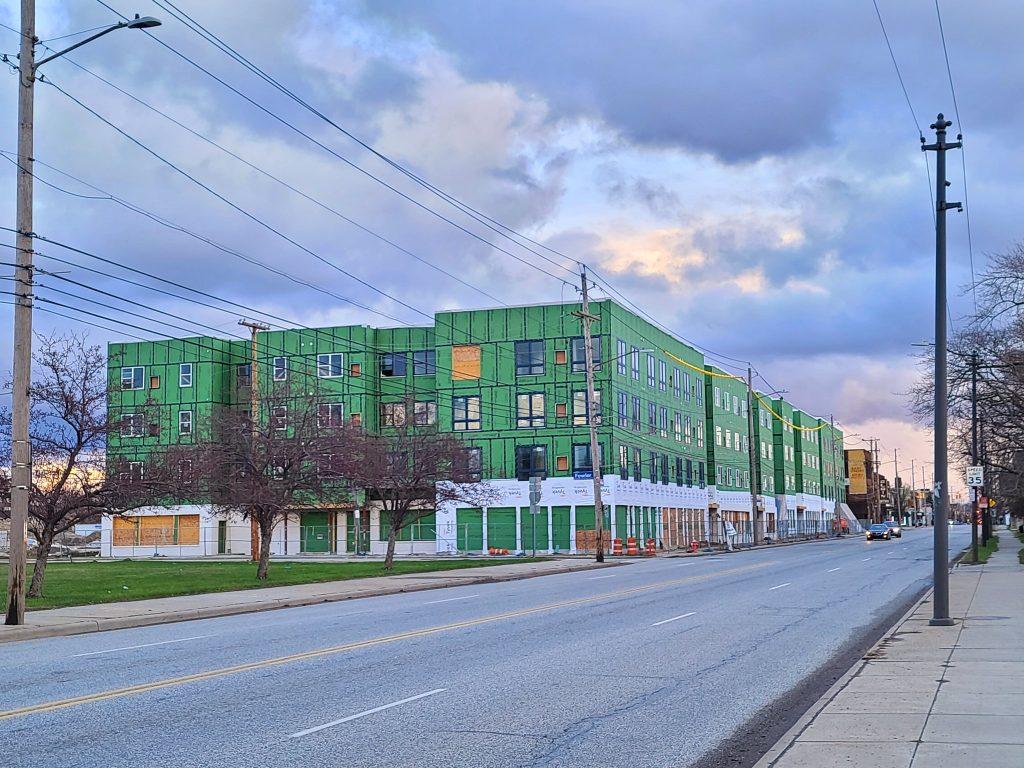
One of the largest vacant sites in Slavic Village was the former St. Alexis Hospital property, 5115 Broadway Ave. It was redeveloped with the 5115 The Rising apartments over ground-floor commercial space including new offices for The University Settlement, a Tri-C job training center and a food pantry. It opened last week. This photo was taken in April 2022 (KJP).
The NOACA report also stressed the importance of TOD investment in what it called “the village center” — the core of Slavic Village, which is an historic district surrounding the intersection of Broadway East 55th. This five-leg intersection including Hamlet Avenue is a traditional mixed-use neighborhood center, with commercial buildings, many featuring apartments above storefronts, fronting the main streets.
NOACA’s report noted this is one of only two intersections in Cleveland with pre-World War I buildings on all of its corners. This crossroads has 50 businesses and institutions, a post office, the offices of Slavic Village Development, Inc., and several churches, including the landmark Our Lady of Lourdes. Local private investors have been buying up properties in this area in recent years including Brooklyn Enterprises/Y&S Asset Management, Inca Tea founder Ryan Florio, and others.
Two other sites were also targeted by the NOACA study for TOD investment. One was the West Boulevard-Cudell Red Line station which NEOtrans exclusively reported interest by Indianapolis developer Flaherty & Collins to acquire 1.37 acres of GCRTA land on Detroit Avenue, west of the rail station. Last month, the developer secured an option from GCRTA to buy the land on which it wants to put an apartment building with 60-80 affordable units, if the developer can secure highly sought-after 9-percent Low Income Housing Tax Credits in February from the Ohio Housing Finance Agency.
The third TOD pilot project site identified by NOACA was the area surrounding the East 116th – St. Luke’s Street Blue/Green Line rail station. While a new station was built here in 2019 for $7.2 million, no effort to develop TOD has been undertaken at this station since the conversion of St. Luke’s Hospital a decade ago into St. Luke’s Manor, a 137-unit apartment building with affordable and market-rate senior housing. NOACA’s plan envisioned more here, including replacing car-centric development immediately south of the station with mid-rise apartment buildings offering ground-floor neighborhood-type retail.

Although much of the Broadway corridor in Slavic Village is in a distressed condition, it remains significantly intact. It offers the opportunity for redevelopment as a traditional mixed-use corridor with apartments over retail by focusing development incentives and rebuilding the street corridor with infrastructure that supports safe and comfortable settings for pedestrians, bikes and transit (Google).
One year ago, the Cleveland Metroparks won $950,000 from the U.S. Department of Transportation’s Rebuilding American Infrastructure with Sustainability and Equity (RAISE) program to design several trails in and near Slavic Village so they could apply for construction funding. Trail projects include the Slavic Village-Downtown Connector Phase Two North, the Iron Court/Opportunity Corridor Connector and the Morgana Run/Booth Avenue Extension. That design work is near to wrapping up so the GCRTA Broadway corridor planning would likely need to coordinate with it.
Slavic Village is struggling to recover from its hollowing out following the foreclosure crisis that hit 15 years ago. And that followed the loss of industrial jobs in the neighborhood since the 1970s. The result is that Slavic Village’s population has fallen in the past 50 years from 70,000 residents to just 22,000 in 2016. The redevelopment of the Broadway corridor, combined with improved transit, pedestrian and bicycle access to job centers like downtown Cleveland, could help reverse that.
But so could the construction of multiple distribution centers nearby that will offer more than 1,000 jobs. One is already under construction — the $30 million, 156,775-square-foot Cleveland Cold Storage food warehouse at East 75th Street and Opportunity Corridor Boulevard. Another — the 182,000-square-foot Reserve Premier warehouse at 3000 E. 55th — is getting its site cleared in preparation for construction.
Other potential developments that could affect the Broadway transit corridor into downtown Cleveland is a decision on the final location for the new Cuyahoga County jail. Local officials appeared ready to select a 44-acre site off Broadway, near the East 34th-Campus rapid transit station, but put off the decision until after new county Executive Chris Ronayne takes office in January.
Another big project is the possibility that the Cleveland Browns may seek to move the football stadium off the lakefront so it can be developed with year-round uses. Team owner the Haslam Sports Group reportedly has shown interest in building a new stadium on the current site of the Main Post Office along Broadway or possibly another site just south of the Municipal Parking Lot. The stadium would apparently be part of a “ballpark village” development district.
END
Our latest Greater Cleveland development news
- Cleveland, Bedrock seek $1 billion for riverfront development
- CRE industry lauds Bibb’s construction permit overhaul
- Bridgeworks design evolves again – minus hotel
- Cleveland Kitchen wins $10M in tax credits
- Welleon gets an ‘A’ in testing Cleveland’s market
- EPA gives Greater Cleveland $129.4M for five solar arrays, reforestation

